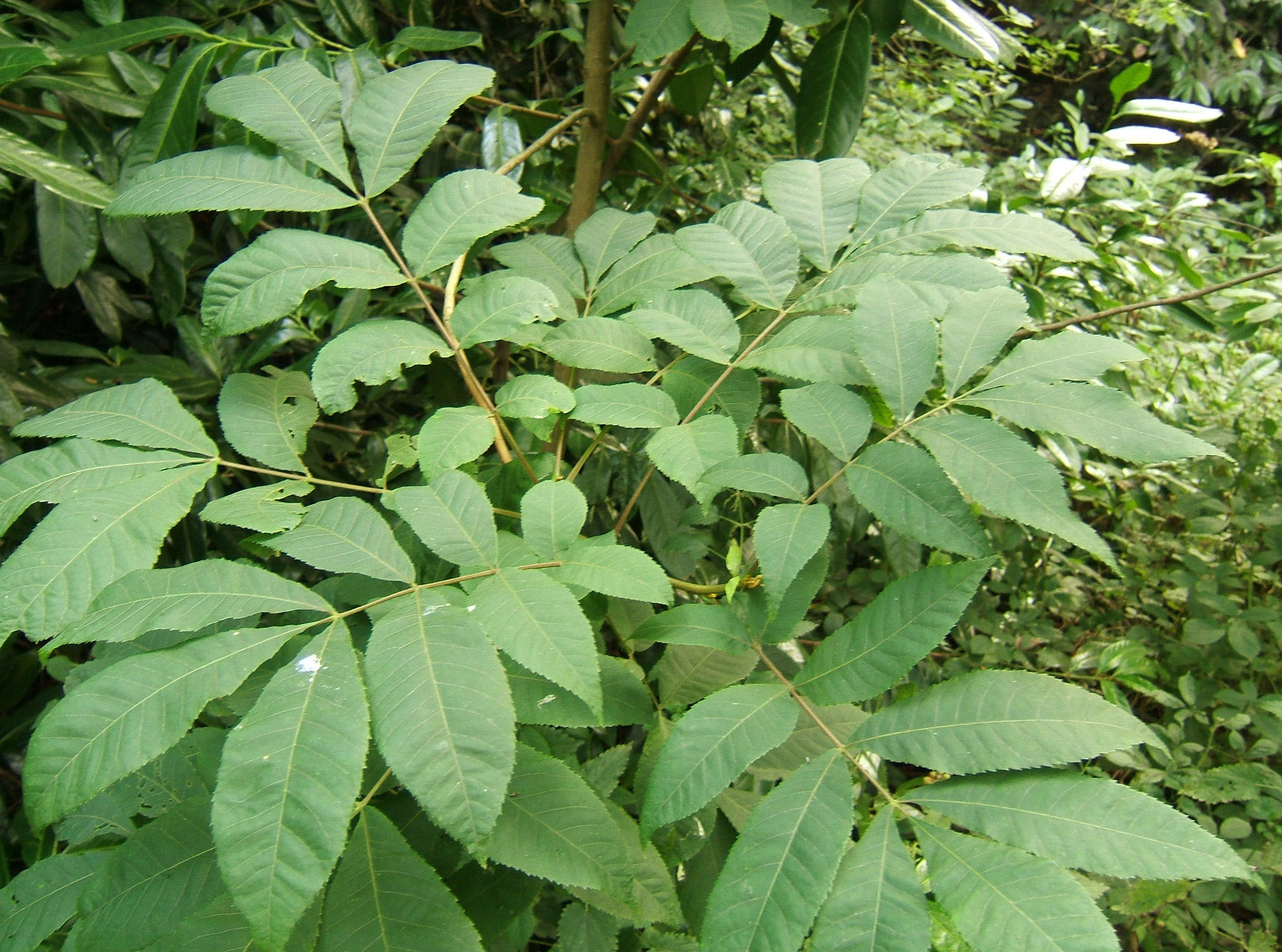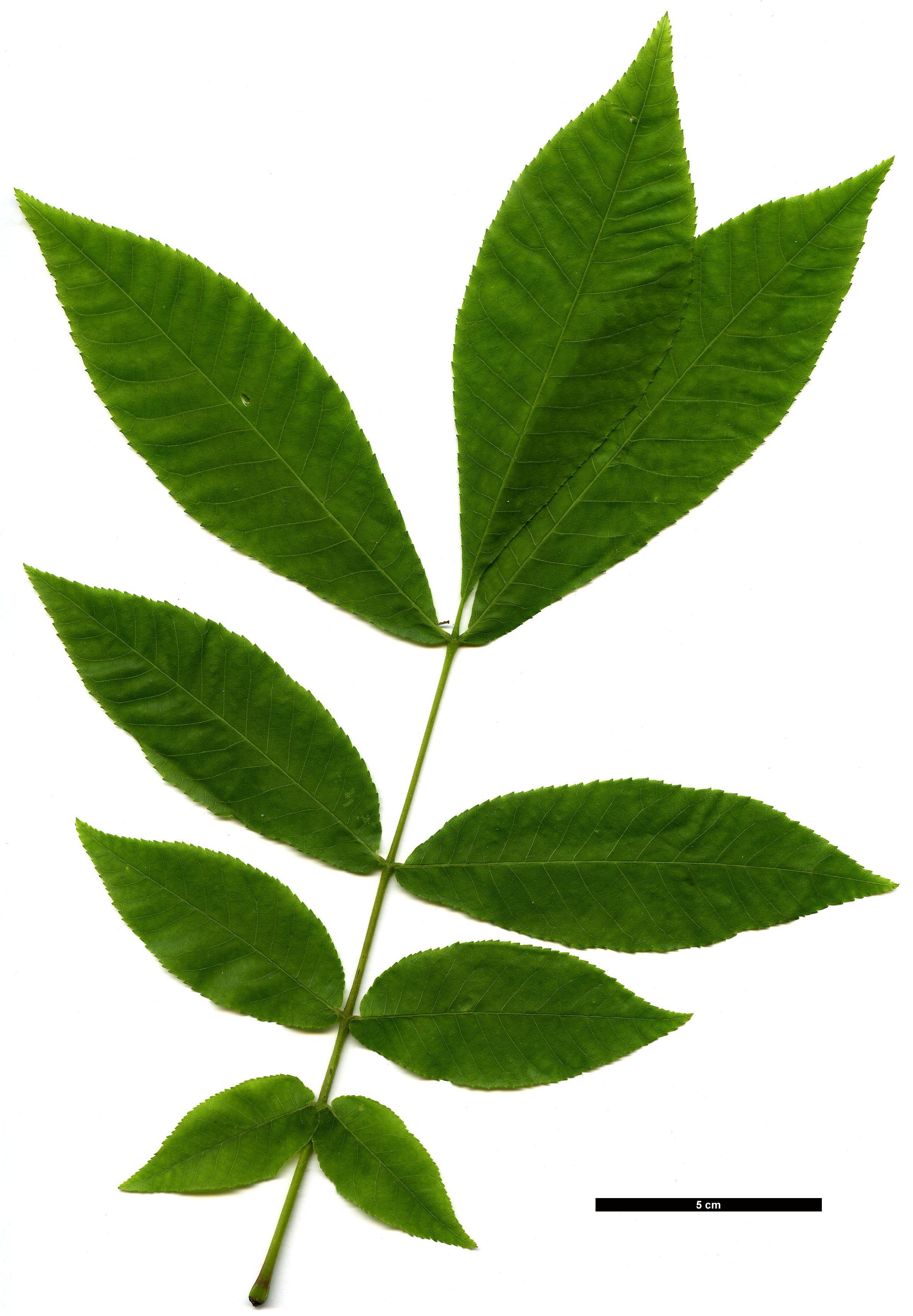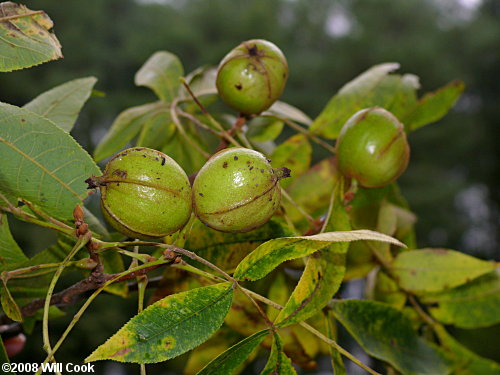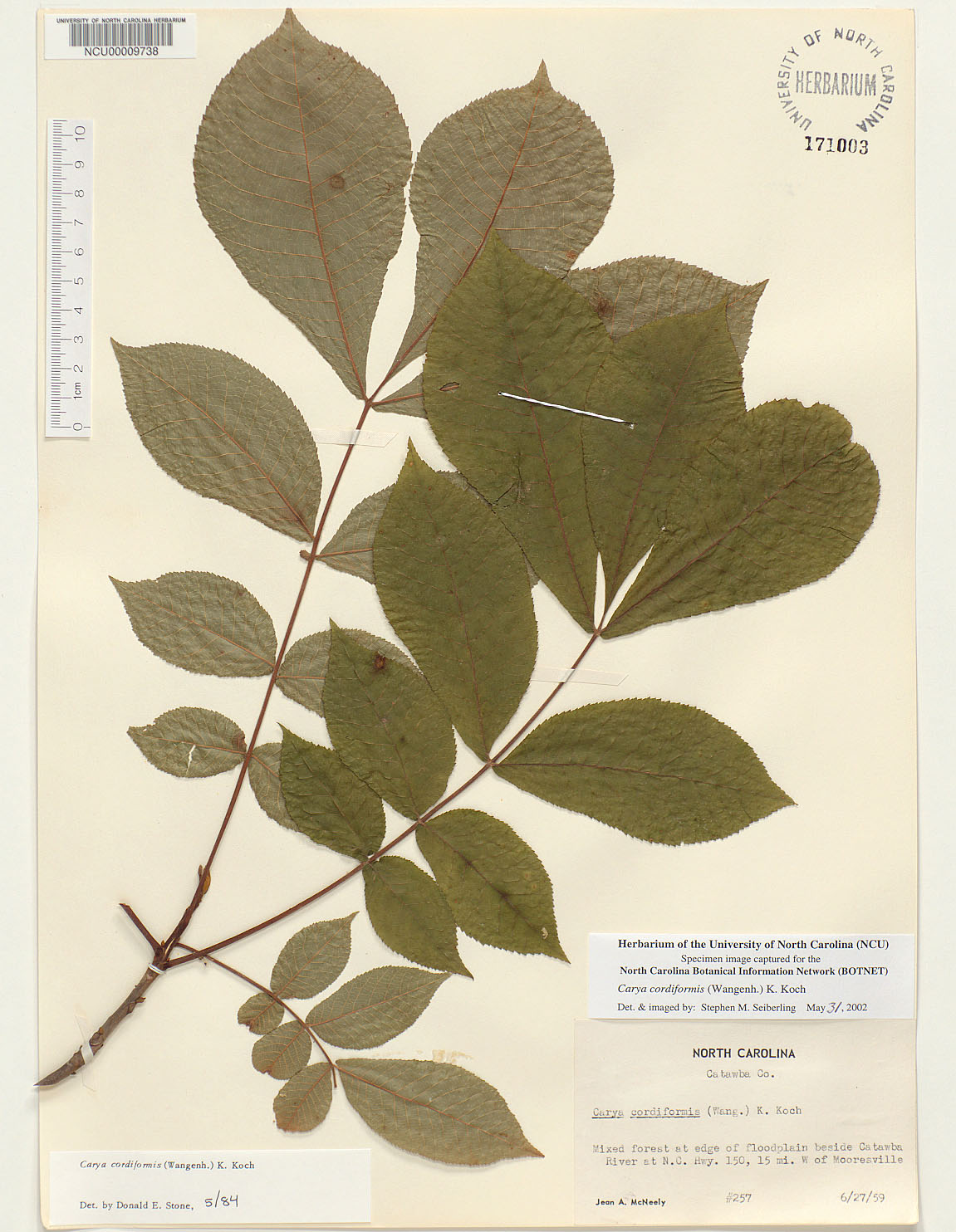Carya cordiformis
Leaves of the bitter nut ( Carya cordiformis )
The bitter nut ( Carya cordiformis ) is a large deciduous tree of the genus Hickory. The range extends from eastern Canada through the eastern United States to Florida.
Description
The bitter nut is up over 50 feet tall with brownish bark that peels off in thin, shell -like scales. Young twigs are hairy rusty brown and later bare and brown shiny. The terminal buds are oblong, usually 10 to 19 millimeters long, rarely, sulfur yellow and covered with numerous glands shed. The lateral, axillary buds are protected by two bracteoles. The leaves are 15 to 25 inches long and are made up of seven to nine, rarely composed from five to 13 leaflets. The leaves are 3-19 cm long and 1-7 cm wide, ovate - lanceolate to lanceolate, acuminate with pointed base and distinctly serrated edge. The lateral leaflets have short stems to 1 millimeter long, the terminal leaflet is on a 2-8 mm long stalk. The upper leaf surface is medium green and glabrous, hairy light green and the underside of young leaves, especially on the main nerve. The leaf stem and the 3 to 7 centimeters long stalk are also hairy at first. The autumn colors of the leaves is golden.
As fruits nuts are formed that are in groups of two or three. The nuts are pear-shaped to globose, 2 to 3.5 inches in size and surrounded by a 2 to 3 millimeters thick pericarp. The pericarp jumps at maturity at four bars to just above the middle. The nuts are light brown, thin, finely grooved, rounded and pointed. The seeds taste bitter. The chromosome number is 2n = 32
Distribution and location
The natural range is in the east of North America and stretches from Ontario and Quebec in eastern Canada over the northeastern United States into the southeastern United States and Texas. The bitter nut is probably the most common and most evenly distributed Hickory kind in North America. It grows in mixed deciduous forests in floodplains and along river banks at altitudes up to about 600 meters, the best stocks are in the fertile valleys of the Ohio and its tributaries. The bitter nut grows on fresh to moist, slightly acidic to alkaline soils of sand, gravel or crushed stone in sunny locations. The species is frost hardy.
System
The bitter nut ( Carya cordiformis ) is a species of the genus hickory ( Carya ) in the family of the walnut family ( Juglandaceae ). It is assigned to the section Apocarya. The first description was in 1787 by Friedrich Adam Julius von Wangenheim as Juglans cordiformis ( basionym ). The species was in 1869 by Karl Heinrich Koch assigned to the genus Carya.
Carya cordiformis forms with Carya illinoinensis, Carya ovata and Carya laciniosa hybrids.
Use
The wood is often used, but is not very valuable. From the seeds an early lamp oil was prepared. In Central Europe it is used because of the beautiful autumn colors in the park. The Fox Carya used as a diuretic and laxative cordiformis medical means.










